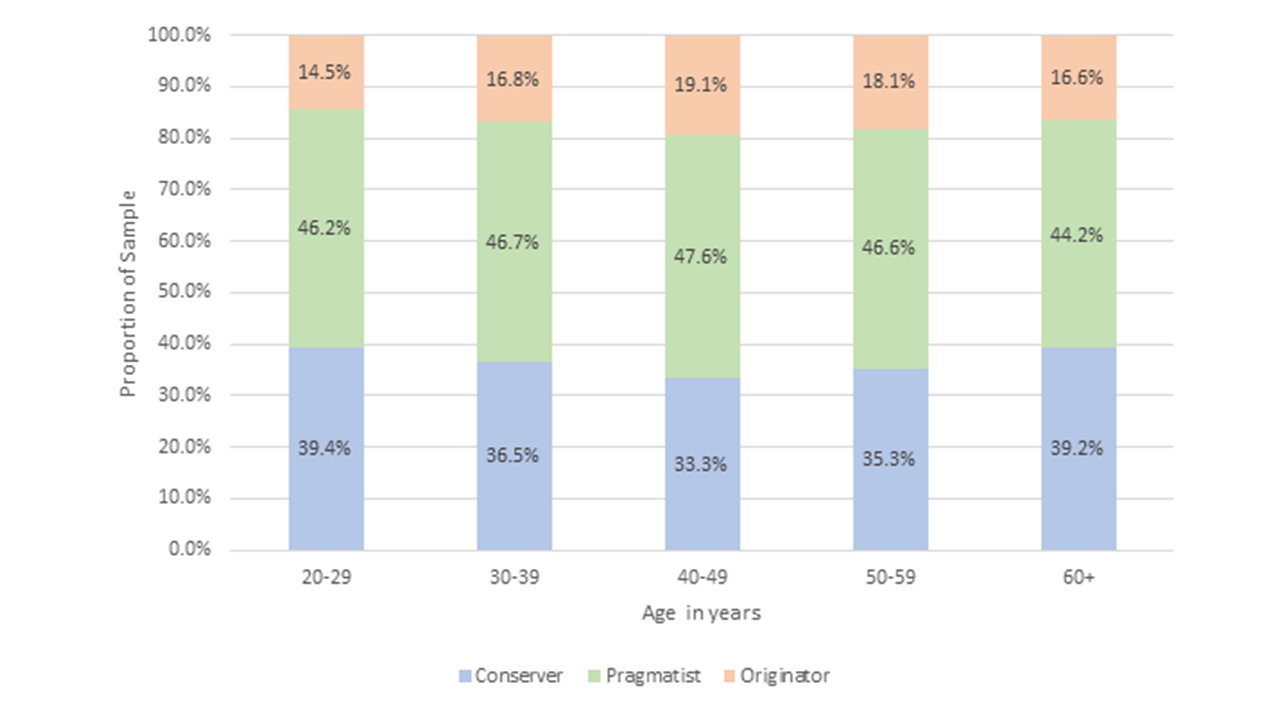Change in the workplace: Age differences fact or fiction
Looking around your workplace today, you will likely see people from across generations working. The Society for Human Resource Management (SHRM) argues that there are five generations on the job today, from the Silent Generation to Gen Z. This boost in age diversity has resulted in conversations about how age differences will affect how organizations function.
As it turns out, most of the evidence for generational differences in preferences and values suggests that differences between these groups are quite small. In fact, there is a considerable variety of preferences and values within any of these groups.
While the Boomer versus Millennial versus Generation Z workplace behavior debates rage on, one thing is clear: people of all ages have different workplace behavior and their comfort with and approach to change. Is it the perception of these differences that become a source of conflict, or are there fundamental differences related to age in how these groups react to change?
Change: It’s happening everywhere, all the time, all at once
Change is increasingly common in organizations and the rate of change in the past few years has been exponential, given new technologies (e.g., ChatGPT) and new circumstances (e.g., remote work due to public health mandates). Organizations often implement changes, but not all change initiatives are successful—in fact, McKinsey researchers estimated that up to 70% of them fail1.
A key part of successful change management is understanding the personnel side of the experience, along with individual and organizational reactions to change. People respond to changes in their environment in different ways, and a person’s comfort with and ability to adapt to change is an important factor for their success at work. Whether they embrace or question the change, understanding their approach is critical to navigating changes that are often inevitable, so that their needs are met, they are supported through the change, and they can continue to succeed.
Does age influence workplace behavior and attitudes?
To understand employee reactions to change, it’s important to understand how people may generally differ in their behaviors and attitudes at work. In particular, age can sometimes play an important role in workplace behavior. Recent research on age differences in the workplace has highlighted some meaningful trends. For example, older workers are more resilient when experiencing conflict related to work-life balance, as compared to younger workers4. Older workers have also been found to have better emotion regulation at work than younger workers2. This emotional regulation can be leveraged to stave off stress in some scenarios, or if it is overused, it can manifest as a new stressor to control one’s emotions and act inauthentically at work.
Individual differences in workplace behavior and attitudes can greatly impact a person (in terms of their productivity, satisfaction, or health) and an organization (for example, whether a change initiative will be successful)3. We know our preference for dealing with change is relatively stable, much like our personalities. However, small shifts over time do occur, especially in response to the environment (e.g., job demands). Since younger adults are more likely to be in implementation roles versus strategic thinking roles, they may be required to pay more attention to detail and maintain existing systems versus looking at the big picture and suggesting radical shifts. Additionally, there is often a stereotype of older workers being more likely to resist change, advocate for existing systems, and be “set in their ways.” In comparison, younger workers might be more inclined to embrace new approaches and disrupt old ways of thinking.
Understanding a person’s approach to change and whether age is a factor can contribute to effective organizational change management. Leaders need buy-in on their vision, and employees must adopt the change to ensure success.
Does age influence a person’s approach to change?
The Change Style Indicator® (CSI) describes a person’s preferred approach to change. Questions are presented in pairs, and test-takers choose which option sounds more like them. Responses are compiled into a score which describes a person’s style and the strength of that preference (slight, moderate, or strong). Using the CSI, people can be classified into one of three styles when it comes to change: (1) Conserver, (2) Pragmatist, or (3) Originator. All three styles are valued and offer unique perspectives; typically, having a balance of these styles in a workgroup or across an organization will lead to the best outcomes. Originators seek to push new ideas forward and break new ground, Conservers seek to understand the details and preserve systems that are effective, and Pragmatists can help mediate and navigate the change in a measured way that accounts for the other perspectives.
Data from MHS customers who completed the CSI between 2017 and 2022 were compiled (52% identified as female; responses came from around the world), and differences in change style between age groups were examined. The proportion of people who identify as Conservers, Pragmatists, and Originators are described in
Figure 1.

Note. N = 66,317 adults. Data collected worldwide from 2017 to 2022.
Approximately 15-20% of each age group is classified as an Originator. Most people fell into the Pragmatist category (around 45%), and the remaining people were Conservers (approximately 35%).
Some differences can be seen between age groups, but in practice, the differences are quite small. People in their 40s were slightly more likely to be Originators than the other age groups; perhaps individuals in this stage of their career are more likely to be in positions to lead change efforts and have enough experience to embrace new paths. Mid-career adults seemed most likely to be open to expansive change relative to their younger or older colleagues. Notably, older adults (i.e., people aged 60 years or older) were no more or less likely to welcome or resist change when compared to younger adults (i.e., people aged 20 to 29 years). It is interesting to note that contrary to stereotypes, younger adults may be more cautious about change than other age groups.
Ultimately, the minimal differences seen through this study’s results demonstrate that the CSI is suitable for use in a wide age-range and change style is a personal preference, unlikely to be shaped solely by one’s age.
Based on this research, age may not be the most influential factor in understanding someone’s change style. Instead, leaders may wish to focus on other behaviors and attitudes at work, such as resilience, tolerance for ambiguity, or stress management, to anticipate how well a change initiative will be adopted. Providing information about upcoming changes, why they are required, and how they will be implemented will be appreciated by Conserver employees of all ages and will help with the adoption of the change. To gain buy-in, seek champions in Originators (who may also be adults in the middle age range or mid-career) who may be quicker to embrace the change.
Want to learn more about MHS’ Change Style Indicator? Click here.
Want to become more aware of change style in your organization? Click here to become a certified practitioner of the Change Style Indicator.
1 Ewenstein. B., Smith, W., & Sologar, A. (2015). Changing change management. Published by McKinsey
& Company. https://www.mckinsey.com/featured-insights/leadership/changing-change-management
2 Hsu, H.-C. (2019). Age differences in work stress, exhaustion, well-being, and related factors from an
ecological perspective. International Journal of Environmental Research and Public Health, 16(1). 50. https://doi.org/10.3390/ijerph16010050
3 Khaw, K. W., Alnoor, A., Al-Abrrow, H., Tiberius, V., Ganesan, Y., & Atshan, N. A. (2022). Reactions
toward organizational change: A systematic literature review. Current Psychology. https://doi.org/10.1007/s12144-022-03070-6
4 Mauno, S., Ruokolainen, M., & Kinnuen, U. (2013). Does aging make employees more resilient to job stress?
Age as a moderator in the job stressor–well-being relationship in three Finnish occupational simples. Aging & Mental Health, 17(4), 411–422. https://doi.org/10.1080/13607863.2012.747077










